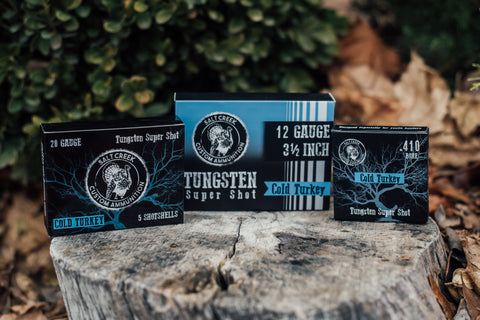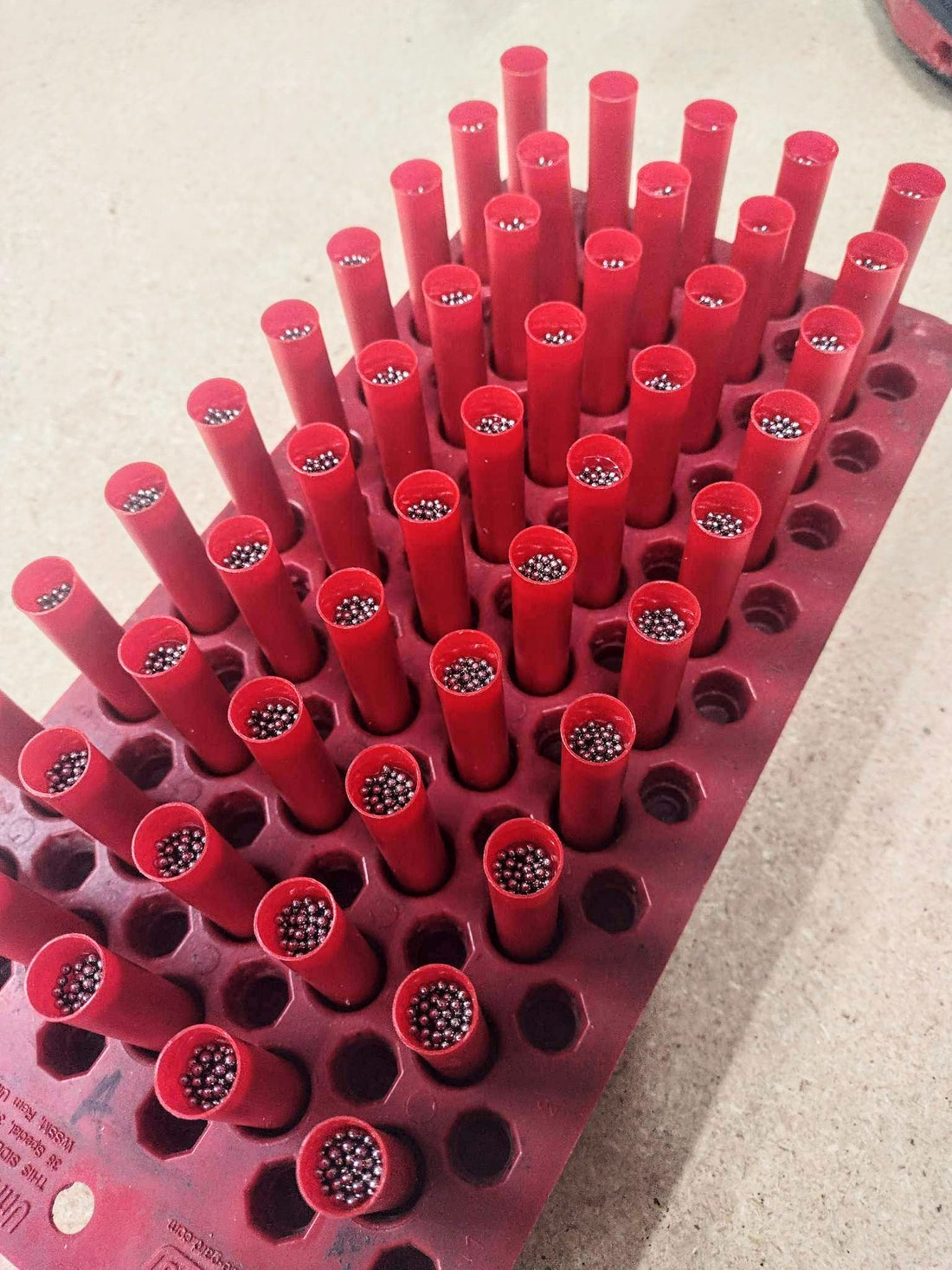What is Tungsten Super Shot (TSS) and why is it so effective for hunting?
The key to the superior performance of Super-18 shot is the density. At 18g/cc (about 60% denser than lead), the penetration energy is so high that it enables one to go down significantly in pellet size, to greatly increase the pellet count and pattern density, while simultaneously increasing the penetration depth of the pellets into the target. This enables one to greatly increase the performance of a typical big bore shotgun, or to go down in bore size or payload without giving up performance - or both.
Why is TSS superior to lead?
When it comes to shotgun pellets and fowl, what determines a pellet's lethality is penetration. And penetration depth is determined by the energy per surface area of the pellet. Weight does not determine this - it's weight per area. If two pellets weigh the same, but one is smaller, the smaller one will penetrate deeper because the energy is focused on a smaller surface area on contact and is not dissipated over as wide an area.
As for comparing 18g/cc tungsten pellets vs lead (11g/cc), a Super-18 pellet will have about the same penetration energy as a lead pellet 5 sizes larger. So, a Super-18 #9 pellet will penetrate into soft matter at approximately the same depth as a Lead #4 pellet. However, in real life scenarios, on real birds, the Super-18 will actually do better vs lead, because of hardness. It will break bones better, or any other hard material, because of its hardness and lack of flattening out when it comes into contact with any surface.
How does TSS perform compared to other shot materials?
For illustration, here's a comparison of pellets of various shot material. Let's say that each pellet is going 1100 fps (muzzle velocity), at sea level and at 70 deg F. Here's the distance each type of pellet will give you 1.25" of ballistics gel penetration, as well as showing the number of pellets per ounce. When you think about the penetration per pellet along with the number of pellets available to penetrate the target, these numbers will illustrate why density makes such a huge difference in a shotshell's performance on fowl.
8g/cc Steel #2 (123/oz) – 45.7 yds
11g/cc Nickel Plated lead #5 (174/oz) – 60.4 yds
12g/cc Hevi-13 #6 (208/oz) – 60.4 yds
15g/cc Fed HWT #7 (220/oz) – 81 yds
18g/cc TSS #8-1/2 (300/oz) – 84.5 yds
In addition to penetration energy and pellet count, there is a 3rd factor that doesn't show up in the math - patterning characteristics. In a nutshell, the denser and harder the shot material, the better the pellets will hold together in a pattern.
Why is it more expensive than lead, steel, or bismuth?
Tungsten has the highest melting point of any metal on earth, making it extremely difficult to manufacture, as well as being a rare element. It is also one of the hardest metals in the world, making it only scratchable by diamond. It's superior takedown performance also makes it a better killer than other metals, meaning no more wounded birds and less shots taken.
Choosing a shot size
For illustration, let's use our Cold Turkey 1-5/8 oz 20 ga load that goes 1100 fps MV. What's the optimum pellet size? With number 8's, you can get 220 in a 10" circle at 40 yds. That means I can get 100 in a 10" circle out to a little over 60 yds. And the 8's give 1.25" penetration out to approx. 90 yds. So, I have a gap between the pellet penetration and the pattern viability of about 30 yds. With number 8-1/2's, I know I can get 270 in a 10" circle at 40 yds. That means I can get 100 in a 10" circle out to almost 70 yds. And the 8-1/2's give 1.25" penetration out to roughly 80 yds. So, I have a gap between the pellet penetration and the pattern viability of about 10-15 yds. We're getting closer to the optimal size for the 20 ga. With number 9s, I can get 310 in a 10" at 40 yds, so the numbers are 70+ for the pattern viability, and 72 yds for the pellet penetration energy. Those match up almost perfectly, with no gap between the pattern viability and pellet penetration. So, that's why I choose #9s for the 20 ga, for Cold Turkey-- and the other shot sizes for the other gauges' loads. A perfect balance between penetration, pellet count and pattern density at distance.
Have more questions? Feel free to message us through the contact tab or our Instagram. Instagram.com/salt.creek.ammo



1 comment
What choke constriction, since this shot is so hard and unforgiving it sounds to me that you can forget about using it in those old guns that all seem to have mod/full constriction, especially Damascus?